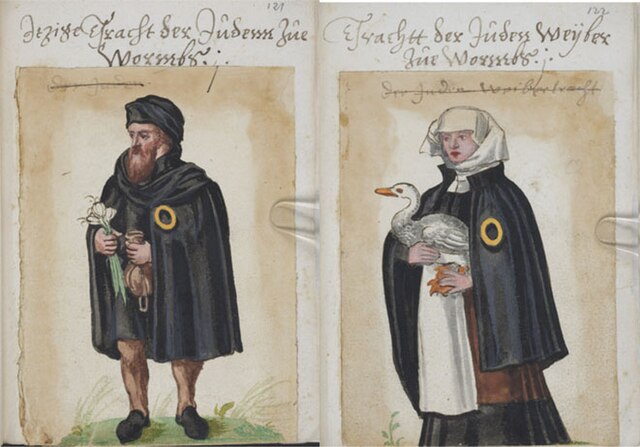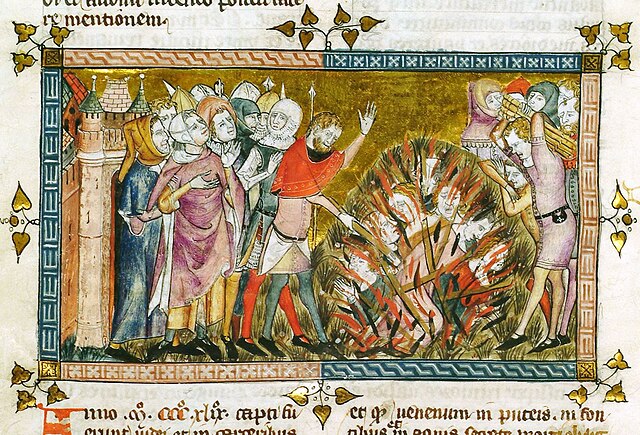The persecution of Jews has been a major event in Jewish history prompting shifting waves of refugees and the formation of diaspora communities. As early as 605 BCE, Jews who lived in the Neo-Babylonian Empire were persecuted and deported. Antisemitism was also practiced by the governments of many different empires and the adherents of many different religions (Christianity), and it was also widespread in many different regions of the world.
Jews from Worms, Germany wear the mandatory yellow badge. A money bag and garlic in the hands are an antisemitic stereotype (sixteenth-century drawing).
Jewish prisoner preparing his defence, a Capuchin distant in the doorway. Painting by Moritz Daniel Oppenheim.
Four Jewish women found dead in a cave in the Zabdani Mountains in 1974 by Syrian border police
The Kaunas pogrom in German-occupied Lithuania, June 1941
Persecution of Jews during the Black Death
The persecution of Jews during the Black Death consisted of a series of violent mass attacks and massacres. Jewish communities were often blamed for outbreaks of the Black Death in Europe. From 1348-1351, acts of violence were committed in Toulon, Barcelona, Erfurt, Basel, Frankfurt, Strasbourg and elsewhere. The persecutions led to a large migration of Jews to Jagiellonian Poland and the Grand Duchy of Lithuania. There are very few Jewish sources on Jewish massacres during the Plague.
Representation of a massacre of the Jews in 1349 Antiquitates Flandriae (Royal Library of Belgium manuscript, 1376/77)





